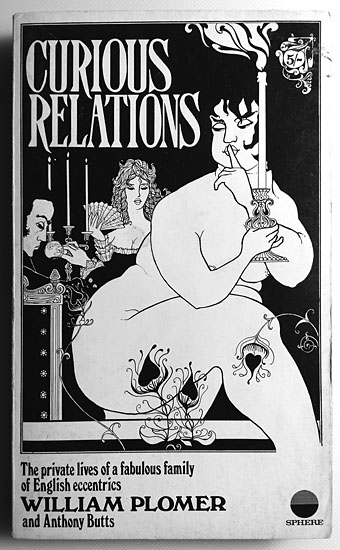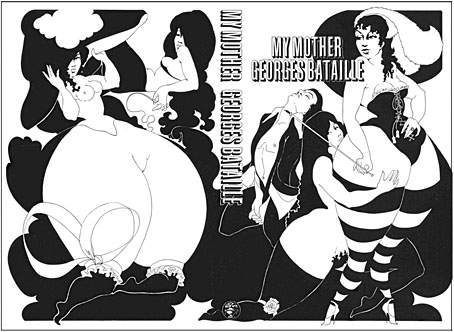“It is the function of creative people to perceive relations between thoughts, or things, or forms of expressions that seem utterly different, and to be able to Connect the seemingly Unconnected.” — William Plomer
Regular readers will know that I relish an art mystery, and also enjoy finding pastiches of Aubrey Beardsley’s endlessly influential drawings. The cover of this book by William Plomer and Anthony Butts, a gift from the generous Mr TjZ, manages to combine both fixations in one. Curious Relations was first published in 1947 with the authors concealed behind the pseudonym “William D’Arfey”. The Sphere edition dates from 1968, a year when Beardsley mania was still prevalent in Britain following the landmark retrospective of the artist’s works at the V&A in 1966. The mystery on this occasion is the identity of the cover artist who isn’t credited, although the solution (for once) hasn’t been particularly elusive. After looking through the Sphere covers at ISFDB I guessed that Bill Botten might be responsible since publishers have a tendency to redeploy artists and designers, and Botten’s covers for science fiction novels displayed a bold graphic style. The guess proved correct, thanks to Mr Botten having a website that details his long career as designer, illustrator and art director for Sphere, Jonathan Cape and others. Some of his other covers have a Beardsley-like quality although there don’t seem to be any more direct pastiches.
Bill Botten cover for My Mother (1972) by Georges Bataille.
As for Curious Relations, this is Plomer and Butts’ account of the upstairs and downstairs world of the d’Arfeys and the Mountfaucons, two invented branches of the Edwardian aristocracy based on Butts’ own family, a confection that looks bizarre and absurd enough for me to enjoy. Where the English upper classes are concerned I prefer to see them skewered by the acid wit of Saki; I only want to hear about Downton Abbey if it’s invaded by Sredni Vashtar and his ravening polecat horde. Biographical notes describe Plomer as homosexual so that’s another plus if this is reflected in the book. The double entendre of the title suggests as much. We’ll see.
Elsewhere on { feuilleton }
• The Aubrey Beardsley archive


